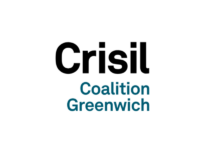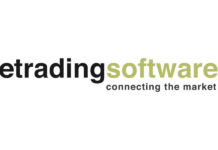A new report entitled, ‘Enhancing the resilience of the US Treasury Market’, has outlined the steps taken by US authorities to support what it calls “the deepest and most liquid market in the world” following eight years of disruption including unexplained flash events, revelations of spoofing activity from tier one banks and severe liquidity droughts.
As US corporate bonds are benchmarked against the US government bonds, disruption in the Treasuries market can have severe consequences for bond issuance and trading across markets.
A lack of data – and therefore transparency – in the US Treasury market has previously led authorities looking into specific events to deliberately not draw conclusions when reporting on the causes of disruption, such as the 2015 joint agency report on a flash crash.
The new report, published on 10 November 2022 by the Inter-Agency Working Group for Treasury Market Surveillance (IAWG), made of teams from the US Department of the Treasury, the Board of Governors of the Federal Reserve System, the Federal Reserve Bank of New York, the US Securities and Exchange Commission, and the US Commodity Futures Trading Commission, represents an annual update on policies, proposals and change made to the market.
The principles guiding the IAWG work are:
- Resilient and elastic liquidity;
- Transparency that fosters public confidence, fair trading, and a liquid market;
- Prices that reflect prevailing and expected economic and financial conditions;
- Economic integration across cash, funding and derivatives markets;
- Financing that does not pose a significant threat to financial stability; and
- Infrastructure that operates effectively and efficiently.
Over the past year, it reports it has made “significant progress toward its goals”. Steps include:
- Proposed policies to enhance the oversight of significant participants in and trading venues for the Treasury market and to centrally clear more Treasury transactions;
- Initiating a pilot collection of data on non-centrally-cleared bilateral repurchase agreements;
- Approving enhancements to the collection and public release of data on secondary market transactions, and begun expanded collection of data on depository institutions’ secondary market transactions in Treasury securities;
- Collecting public feedback on possible approaches to additional public transparency;
- Studying the potential benefits and costs of all-to-all trading in the market; and
- Analysing options for establishing more uniform leverage requirements across different market segments and for consistently identifying market participants across data collections.
The report follows a 1 November 2022 letter written by Beth Hammack, chair of the Treasury Borrowing Advisory Committee (TBAC), to the secretary of the Treasury regarding a review that TBAC conducted on the impact of trade dissemination via public release of transaction-level data, in other fixed income markets, like swaps, corporates, and MBS.
TBAC had reviewed these markets and debated the pros and cons of additional transparency in the Treasury market.

“Some felt that additional transparency would level the playing field for smaller firms,” she wrote. “Others felt that substantial technical expertise and significant computing power would be required to process the data, similar to the Swaps Data Repository, and thus only sophisticated and technologically advanced market participants would benefit.”
While she noted that on-the-run prices are already quite transparent, “Most members … did not object to appropriately calibrated on-the-run trade dissemination. Lessons from both the swaps and futures market would suggest using caps on reported sizes, delays on reporting block trades, and setting cap sizes across the curve based on duration equivalents.”
Hammack reported that changes such as increased transparency, mandatory clearing, changes to dealer registration, and changes to prudential requirements would influence market functioning and the committee favoured reviewing them holistically.
However, she also noted that a majority of committee members expected the effect of transparency during stress “to be a net inhibitor of risk intermediation. As such, we recommend allowing time for observation and assessment of the impact to on-the-runs before considering other sectors.”
As stress events are the single greatest risk to market liquidity – with major dealers refusing to make markets in March 2020 during a massive sell-off – it would seem that market making is the key element yet is not being addressed within the proposals.
©Markets Media Europe 2025













